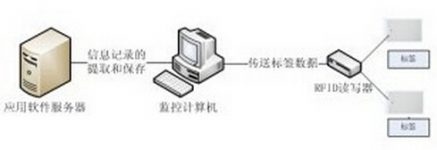
RFID nursing homes, nursing homes personnel positioning management
[ad_1]
Project background
As of the end of 2009, 167 million people over 60 years old in China accounted for about 14% of the total population; it is estimated that by 2020 the elderly population will reach 240 million people, accounting for 17.17% of the total population; it is estimated that by 2050, China’s senior population will reach a peak of 4.37 Billion, accounting for about 30% of the total population. Allowing the elderly to enjoy their twilight years will become an important criterion for building a harmonious society.
Safety management is the core requirement of nursing homes and nursing homes. Whether or not a person can respond to requests for help in an emergency is related to the lives of patients and the elderly. Therefore, how to obtain personnel’s alarm information and location information in a timely manner is particularly important! In addition, in daily life, the information management of services will also improve the management level of nursing homes and nursing homes, and bring greater business opportunities to nursing homes and nursing homes.
This program integrates personnel positioning, alarm management, and daily management. It is committed to improving the safety and quality of life of patients and the elderly in nursing homes and nursing homes. It is a powerful assistant in the safe and civilized management of nursing homes and nursing homes.
The characteristics and advantages of 433MHz active RFID technology in the management of personnel positioning in nursing homes and nursing homes
1. It has the characteristics of strong penetration, strong diffraction, long transmission distance, etc., suitable for various complex environments.
2. In view of the penetrability and strong diffraction of 433MHz, the electronic tag can be hung on the chest in the form of a badge or placed in the pocket of clothes, which is convenient to carry.
3. Strong diffraction, which effectively solves the problem of signal blocking on building walls in other frequency bands.
4. Automatic long-distance recognition, long reading distance (adjustable from 1 to 150 meters), no need to close the card.
5. Ultra-low power consumption, no radiation damage, safe and reliable to use.
6. Due to the powerful long-distance characteristics of 433MHz RFID, it gives great convenience to the application of handhelds. For emergency evacuation drills, inventory of people going out to assembly sites, etc., you only need to use a mobile phone with a portable Bluetooth reader or handheld to scan the information of the personnel in place at the assembly site, which is extremely convenient.
7. If you want to manage vehicles, equipment, etc., you only need to install an electronic tag card on the vehicle or equipment, and the reader can recognize it at the same time.
Scheme principle
The system is composed of “application software server”, “monitoring computer”, “RFID reader” and “RFID electronic tag”.
The main idea is to distribute “RFID electronic tags” to each person, so that one person has one card, and the personnel will hang the “RFID electronic tags” on their chests or put them in their pockets (it is best to uniformly stipulate the way of carrying). The electronic tag has a call button. When the call button is pressed, the electronic tag will send the tag number and call information. The reader obtains the electronic tag information and transmits it to the monitoring computer through the network. The monitoring computer analyzes the location of the electronic tag And call information, and the data of the monitoring computer is recorded by the application software server.
Install appropriate “RFID readers” according to the layout of the building, distribute management computers and install management software in the duty room. If you need to increase the management of equipment, vehicles, etc., you only need to equip the equipment, vehicles, etc. with electronic tags.
Schematic diagram of overall architecture

Schematic diagram of personnel positioning

[ad_2]



